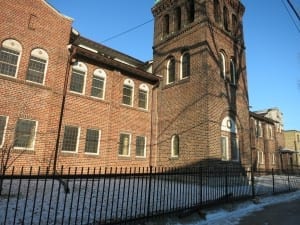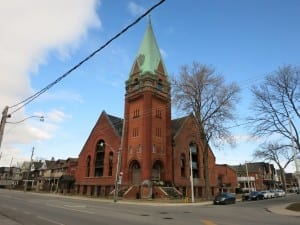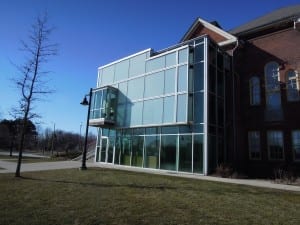Ontario’s land-use planning framework gives rise to three options for the adaptive reuse of heritage places of worship
The Wesley Mimico United Church redevelopment project is predicated upon the fact that churches are not autonomous agents with regard to heritage places of worship.
They are, instead, part of a regulated land-use system.
Hackworth and Gullikson (2013)
A recent journal article by Jason Hackworth and Erin Gullikson of the University of Toronto outlines how Ontario’s land-use planning framework shapes projects involving heritage properties in Toronto and elsewhere.
A summary of their overview can be accessed here.
Ontario Heritage Act
Extensive information is available regarding heritage preservation legislation in Ontario as it relates to places of worship.
The preferred use of a heritage place of worship is its original one, according to A Guide for Conserving Heritage Places of Worship in Ontario Communities.
The following blog posts are of relevance regarding the Wesley Mimico United Church redevelopment project:

Wesley Mimico United Church. On the left is part of the 1950s addition. On the right is the bell tower from the original 1920s church building. Jaan Pill photo
1. Wesley Mimico United Church at 2 Station Road was built in two phases beginning with a structure completed in 1924 followed by an addition completed in 1954.
2. A church-to-condo conversion project has been completed at 152 Annette Street (photo on left, below the Wesley Mimico United Church photo).
3. A church-to-condo project at 243 Perth Avenue has been highlighted in a Toronto Star article. The large parking lot at the back of the building will provide space for construction of an additional building. The original church building and addition will be the sold as condo units.
4. A church-to-condo conversion project has been completed at 21 Swanwick Avenue has been completed. A City of Toronto report notes that proposed alterations to the building, as part of the church conversion process, are acceptable in order to accommodate the new use for the church.
5. The Assembly Hall at Kipling Avenue and Lake Shore Boulevard West is a multi-use community building which features an adaptation involving the addition of a wide set of stairs within a partially transparent enclosure added to the outside of the century-old building.
The Assembly Hall illustrates the adaptive re-use of a significant heritage resource. A similar adaptive reuse project involving the attribute of transparency can be found at the historic Goodes Hall facility at the Queen’s School of Business in Kingston, Ontario.
6. Other buildings are of interest with regard to adaptive-reuse options include Bethel Green Seniors Residence and Asbury and West United Church. The Deer Park redevelopment is also of interest.



Leave a Reply
Want to join the discussion?Feel free to contribute!